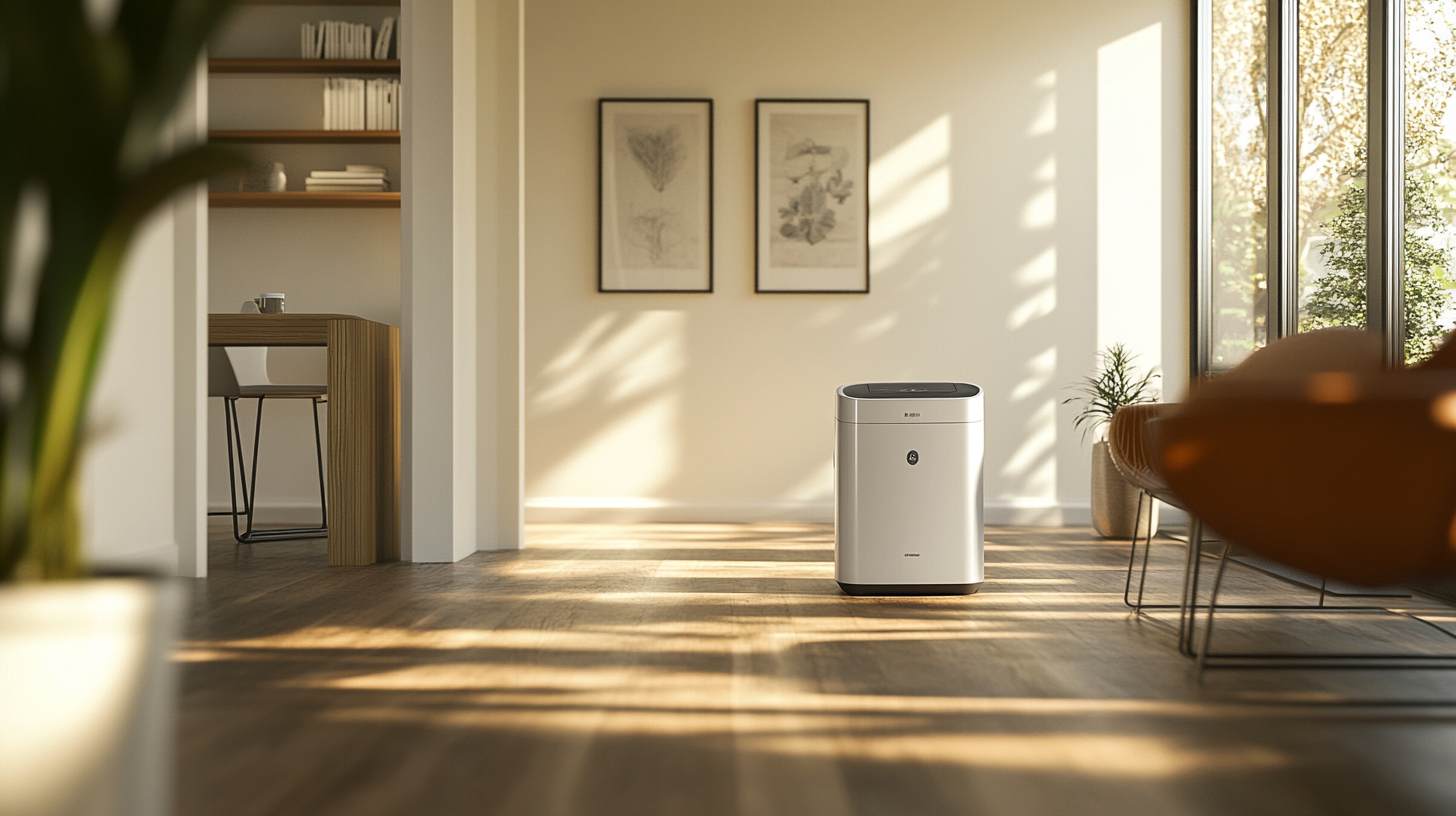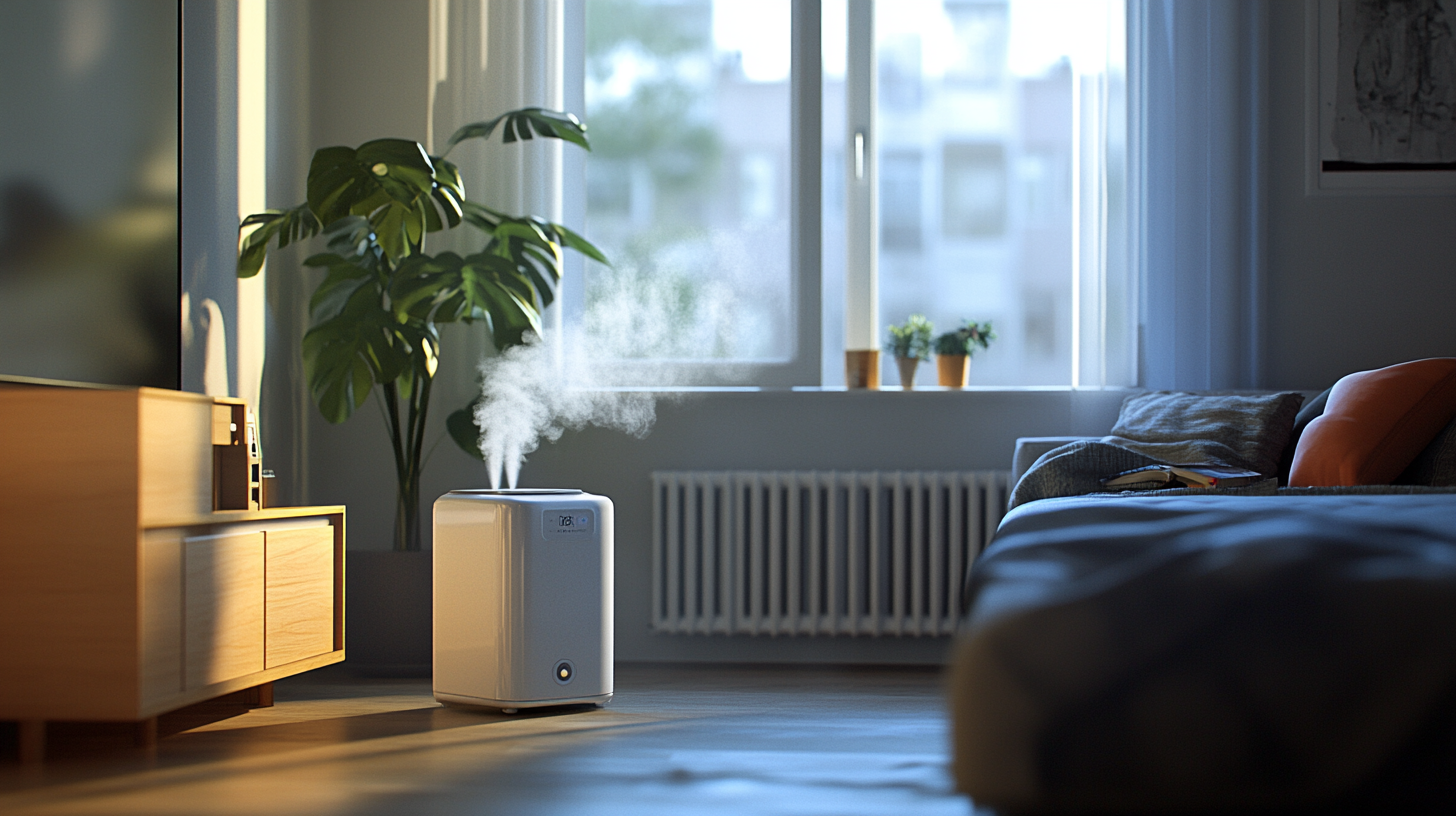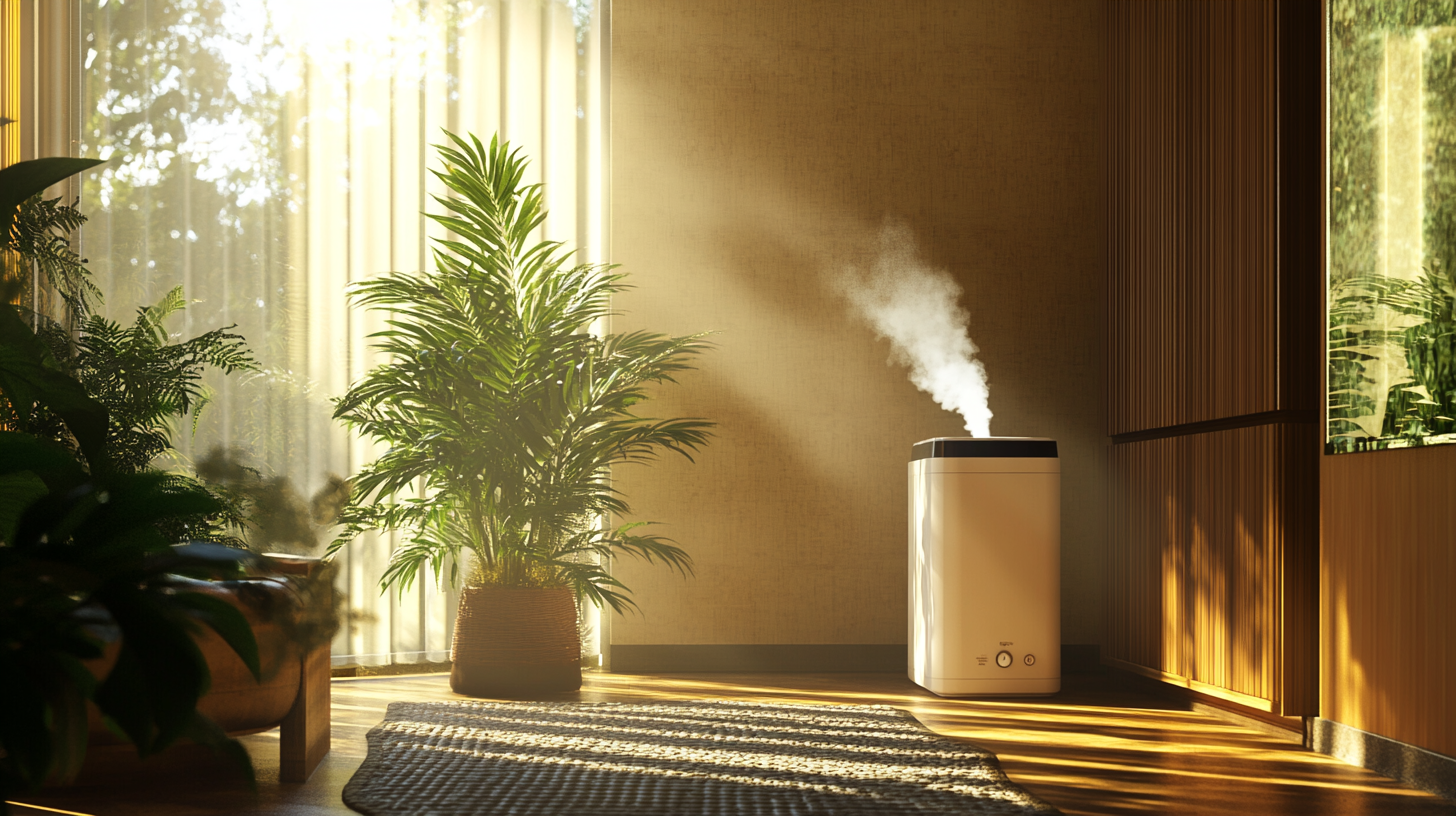
In the quest for a healthy living environment, understanding the intricate relationship between moisture and mold growth is crucial. This blog aims to shed light on how these two elements are interconnected and the subsequent health risks posed by mold in our homes. Moisture, often stemming from seemingly harmless sources like condensation or leaks, creates an ideal breeding ground for mold. This silent invader, while often overlooked, can have significant implications for the health and well-being of household occupants.
The Moisture-Mold Nexus: A Critical Understanding
At the core of mold growth lies the ever-present factor of moisture. Whether it's due to high humidity, water leaks, or poor ventilation, the presence of excess moisture sets the stage for mold spores to thrive and multiply. This section of the blog will delve into the science behind mold growth, highlighting how everyday activities and structural issues can contribute to elevated moisture levels, inadvertently inviting mold into our living spaces.
Health Risks: The Invisible Threat of Mold
Mold is not just a cosmetic concern or a structural nuisance; it poses real health risks, especially to those with allergies, asthma, or compromised immune systems. From respiratory issues to allergic reactions, the health implications of mold exposure are diverse and potentially serious. This blog will explore these health risks in detail, providing insights into the symptoms of mold exposure and the long-term effects on health.
Understanding Mold and Moisture
Mold in homes is a common issue that can have significant health implications. Understanding how mold develops and the conditions that lead to its growth is essential for maintaining a healthy living environment. This section explores the relationship between mold and moisture, the typical conditions that foster mold growth, and the common areas in homes where mold is often found.
How Mold Develops in Homes
- Conditions that Lead to Mold Growth: Mold thrives in moist, warm, and poorly ventilated environments. Excess moisture, whether from leaks, high humidity, or condensation, creates the perfect breeding ground for mold spores. These spores are always present in the air but will only grow when they land on wet surfaces.
- Common Areas in Homes Where Mold is Found: Mold is commonly found in areas where moisture accumulates, such as bathrooms, kitchens, basements, and around windows. Poorly ventilated areas, leaky roofs, and around plumbing pipes are also typical spots for mold growth. Regular inspection and maintenance of these areas are crucial to prevent mold infestation.
Health Implications of Mold Exposure
Mold exposure can have various health effects, ranging from mild to severe, depending on the individual's sensitivity and the duration of exposure.
- Short-Term and Long-Term Health Effects: Short-term effects of mold exposure can include allergic reactions, such as sneezing, red eyes, skin rash, and respiratory issues. Long-term exposure, especially in damp and moldy environments, can lead to more serious health problems like asthma exacerbation, chronic sinusitis, and in severe cases, lung infections.
- Vulnerable Groups and Allergy Concerns: Individuals with existing respiratory conditions, allergies, or weakened immune systems are more susceptible to the effects of mold. Children, the elderly, and people with chronic lung diseases are particularly vulnerable and may experience more severe reactions. It’s essential for these groups to live in a mold-free environment to prevent health complications.
Maintaining Optimal Humidity Levels
Effective moisture control is essential for maintaining a healthy and comfortable home environment. By understanding and implementing key principles of moisture management, homeowners can prevent mold growth, structural damage, and improve indoor air quality. This section covers the critical aspects of maintaining optimal humidity levels and effective ventilation strategies.
Maintaining Optimal Humidity Levels
Ideal Indoor Humidity Range for Preventing Mold: The optimal indoor humidity level to prevent mold growth is typically between 30% and 50%. This range is low enough to inhibit mold growth but high enough to be comfortable for occupants. Maintaining humidity within this range is crucial, especially in areas with naturally high humidity or in spaces like bathrooms and kitchens where moisture is frequently generated.
Tools for Monitoring Indoor Humidity (Hygrometers): Hygrometers are tools used to measure the humidity level in your home. They come in various forms, including digital and analog, and can be standalone devices or integrated into smart home systems. Regularly monitoring humidity levels with a hygrometer helps in making informed decisions about ventilation and dehumidification needs.
Effective Ventilation Strategies
Importance of Proper Ventilation in High-Moisture Areas: Proper ventilation is key in controlling moisture levels, especially in high-moisture areas like kitchens, bathrooms, and basements. Effective ventilation ensures that moist air is expelled from these areas, reducing the risk of mold growth and maintaining a healthy indoor environment.
Ventilation Tips for Kitchens, Bathrooms, and Basements:
- Kitchens: Use exhaust fans or range hoods when cooking to remove excess moisture. Ensure that these fans vent outside and not into the attic or another indoor space.
- Bathrooms: Install exhaust fans and run them during and after showers or baths to remove steam and moisture. Consider using a timer switch to ensure the fan runs long enough to be effective.
- Basements: Basements often require dehumidifiers to maintain optimal humidity levels. Ensure that basement windows and doors are properly sealed and that ventilation is adequate to prevent dampness.
Practical Moisture Control Techniques
Effective moisture control in homes is essential for maintaining a healthy living environment and preventing damage caused by excess humidity. This section discusses practical techniques to address common sources of indoor moisture and the use of appliances like dehumidifiers and air conditioners to manage humidity levels.
Addressing Common Sources of Indoor Moisture
- Fixing Leaks and Plumbing Issues: One of the first steps in moisture control is to address any leaks or plumbing issues. Even small leaks can contribute significantly to indoor humidity levels over time. Regularly inspect pipes, faucets, and roofing, and repair any leaks promptly to prevent moisture accumulation.
- Managing Condensation on Windows and Pipes: Condensation on windows and pipes is a common issue, especially in colder months. To manage this, ensure adequate insulation on windows and pipes. Using moisture-absorbent materials, like window insulation kits or pipe sleeves, can also help reduce condensation.
Using Dehumidifiers and Air Conditioners
- When and How to Use Dehumidifiers: Dehumidifiers are particularly useful in areas where humidity levels are consistently high, such as basements or bathrooms without adequate ventilation. Use a dehumidifier when humidity levels exceed 50%. It's important to choose a dehumidifier with the right capacity for the space and to empty and clean it regularly to ensure effectiveness.
- Benefits of Air Conditioning for Moisture and Temperature Control: Air conditioners not only cool the air but also help in reducing indoor humidity levels. By maintaining a comfortable temperature, air conditioners can prevent the excessive buildup of moisture, especially in hot and humid climates. Regular maintenance of the air conditioning system, including cleaning or replacing filters, is crucial for optimal performance in both temperature and moisture control.
Mold-Resistant Materials and Construction
Incorporating mold-resistant materials and construction techniques is essential in creating a durable and healthy living environment. This approach is particularly crucial in areas prone to moisture, such as bathrooms, kitchens, and basements. This section of the blog will explore the types of mold-resistant materials suitable for various parts of the home and the construction techniques that can help prevent mold growth.
Choosing Mold-Resistant Building Materials
Types of Mold-Resistant Materials for Walls, Floors, and Ceilings:
- Walls: Use mold-resistant drywall, especially in moisture-prone areas. This type of drywall is treated with materials that inhibit mold growth.
- Floors: Opt for tiles, vinyl, or laminated flooring that resist moisture. Avoid using carpets in areas like bathrooms or basements where moisture levels are high.
- Ceilings: Consider mold-resistant ceiling tiles or panels, especially in basements or other areas with limited ventilation.
- Importance of Mold-Resistant Paint and Primers: Mold-resistant paints and primers contain antimicrobial agents that prevent mold growth. They are ideal for use in high-moisture areas and provide an additional layer of protection against mold. These products are particularly beneficial in bathrooms, kitchens, and laundry rooms.
Construction Techniques to Prevent Mold
Design Considerations for New Construction and Renovations:
- When designing or renovating a home, consider the potential for moisture accumulation and mold growth. Include features like adequate ventilation, moisture barriers, and sloped surfaces for water runoff.
- Design bathrooms and kitchens with non-porous surfaces and ensure that areas around showers and sinks are well-protected against moisture.
- Importance of Proper Sealing and Waterproofing:
- Proper sealing and waterproofing are critical in preventing water intrusion, a major contributor to mold growth. Pay special attention to areas like basements, roofs, and around windows and doors.
- Use sealants and waterproofing materials in joints, seams, and points of potential water entry to ensure a moisture-resistant environment.
Daily Habits and Routine Maintenance
Maintaining a healthy and mold-free home environment involves more than just occasional repairs and fixes; it requires daily habits and routine maintenance. By incorporating simple practices into your daily life and conducting regular home inspections, you can significantly reduce moisture levels and prevent mold buildup. This section will guide you through effective household habits and inspection techniques to keep your home dry and mold-free.
Household Habits to Reduce Moisture
Daily Practices to Minimize Indoor Moisture:
- Use exhaust fans in bathrooms and kitchens during and after activities that produce moisture, such as showering, cooking, or dishwashing. This helps to expel moist air outside and reduce humidity levels.
- Avoid air-drying clothes indoors, as this can significantly increase indoor humidity. If you must air-dry indoors, do so in a well-ventilated area.
- Keep indoor plants in moderation, as they can contribute to indoor humidity. Ensure that the soil is not overly wet.
Regular Cleaning Routines to Prevent Mold Buildup:
- Clean and dry any wet or damp spots within 48 hours to prevent mold growth.
- Regularly clean high-moisture areas like bathrooms and kitchens with mold-resistant cleaners.
- Ensure that shower curtains, bathroom tiles, and grout are kept clean and dry.
Regular Home Inspections
How to Conduct a Home Moisture and Mold Inspection:
- Inspect your home regularly for any signs of moisture or leaks, especially in prone areas like basements, attics, and around windows and pipes.
- Check for condensation or water stains on walls, ceilings, and floors, which can indicate high humidity or leaks.
- Use a hygrometer to monitor humidity levels in different areas of your home, ensuring they stay within the recommended range of 30% to 50%.
Identifying Early Signs of Mold and Moisture Problems:
- Look for visible signs of mold growth, which can appear as black, white, green, or yellow spots on surfaces.
- Be aware of musty odors, a common indicator of hidden mold.
- Pay attention to any allergic symptoms that worsen at home, as this could be a sign of mold exposure.
FAQs
-
How does moisture cause mold growth?
Moisture creates an ideal environment for mold spores, which are naturally present in the air, to attach to surfaces and grow. Excess moisture, whether from leaks, condensation, or high humidity, accelerates this process.
-
Ideal indoor humidity to prevent mold?
The ideal indoor humidity level to prevent mold is between 30% and 50%. Maintaining this range minimizes the moisture content in the air, reducing the likelihood of mold growth.
-
Can exhaust fans prevent bathroom mold?
Yes, using exhaust fans in bathrooms during and after showers or baths helps remove excess humidity and moisture, significantly reducing the risk of mold growth in these typically damp areas.
-
Best cleaning routine to prevent mold?
A good cleaning routine includes drying any wet areas within 48 hours, using mold-resistant cleaners in high-moisture areas like bathrooms and kitchens, and regularly inspecting and cleaning gutters and downspouts.
-
Signs of mold in the home?
Signs of mold include visible mold growth, which may appear as spots or patches in various colors, a musty odor, and increased allergy symptoms such as sneezing or itchy eyes when indoors.
Contact Crawl Logic Today!
Crawl Logic will do everything we can to ensure your experience with us is excellent.
Request A FREE Estimate
We will get back to you as soon as possible.
Please try again later.
CHECKOUT RECENT POST



Schedule Your FREE Crawl Space Evaluation!
Did you know YOU DON'T HAVE TO BE HOME for us to provide you with your 100% FREE crawl space inspection and report?
CHOOSE THE BEST OPTION, CRAWL LOGIC!
Ready to Elevate Your Experience? Let's embark on a journey to success together! Our team is dedicated to delivering excellence and innovation tailored to your unique needs. Connect with us now to discover how our services can transform your vision into reality. Your next big leap starts here
HOURS
Monday: 8:00AM - 5:00PM
Tuesday: 8:00AM - 5:00PM
Wednesday: 8:00AM - 5:00PM
Thursday: 8:00AM - 5:00PM
Friday: 8:00AM - 5:00PM
Saturday: 8:00AM - 5:00PM
Sunday: 8:00AM - 5:00PM
Copyright © 2020 Crawl Logic - Franklin Crawl Space Encapsulation and Repair
